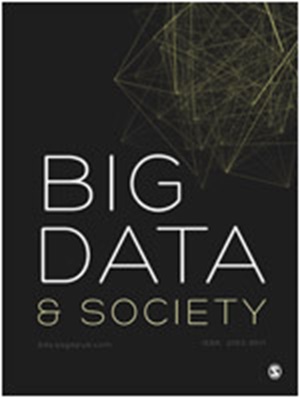不要那么快!执法和边境管制中的数据暂时性
IF 5.9
1区 社会学
Q1 SOCIAL SCIENCES, INTERDISCIPLINARY
引用次数: 0
摘要
在本文中,我们研究了数据在执法和边境控制中的时间影响。我们从这样一个假设开始,即知识和行动的速度是由各种行动者、地点和材料的异质形成和相互作用定义的。为了分析这些形成和相互作用,我们引入并解开了“数据时间性”的概念。数据时间性解释了数据化环境中知识和行动的速度如何与(1)多样化的社会节奏、(2)技术铭文和(3)速度与其他优先事项的平衡紧密对应。具体而言,我们使用数据时间性的概念作为启发式工具,在两个案例研究中探索数据和时间的纠缠:Frontex的联合行动报告应用程序和预测性警务软件PRECOBS。该分析确定了数据时间性的经验构成中的两个关键主题。第一个涉及创建事件,作为时间定位的知识和行动的参考点。第二个问题涉及时间和可操作性,也就是说,何时应该触发基于数据分析的干预措施的问题。本文章由计算机程序翻译,如有差异,请以英文原文为准。
Not so fast! Data temporalities in law enforcement and border control
In this paper, we investigate the temporal implications of data in law enforcement and border control. We start from the assumption that the velocity of knowledge and action is defined by heterogeneous formations and interactions of various actors, sites, and materials. To analyze these formations and interactions, we introduce and unpack the concept of “data temporality.” Data temporality explicates how the speed of knowledge and action in datafied environments unfolds in close correspondence with (1) variegated social rhythms, (2) technological inscriptions, and (3) the balancing of speed with other priorities. Specifically, we use the notion of data temporality as a heuristic tool to explore the entanglements of data and time within two case studies: Frontex’ Joint Operation Reporting Application and the predictive policing software PRECOBS. The analysis identifies two key themes in the empirical constitution of data temporalities. The first one pertains to the creation of events as reference points for temporally situated knowledge and action. And the second one pertains to timing and actionability, that is, the question of when interventions based on data analysis should be triggered.
求助全文
通过发布文献求助,成功后即可免费获取论文全文。
去求助
来源期刊

Big Data & Society
SOCIAL SCIENCES, INTERDISCIPLINARY-
CiteScore
10.90
自引率
10.60%
发文量
59
审稿时长
11 weeks
期刊介绍:
Big Data & Society (BD&S) is an open access, peer-reviewed scholarly journal that publishes interdisciplinary work principally in the social sciences, humanities, and computing and their intersections with the arts and natural sciences. The journal focuses on the implications of Big Data for societies and aims to connect debates about Big Data practices and their effects on various sectors such as academia, social life, industry, business, and government.
BD&S considers Big Data as an emerging field of practices, not solely defined by but generative of unique data qualities such as high volume, granularity, data linking, and mining. The journal pays attention to digital content generated both online and offline, encompassing social media, search engines, closed networks (e.g., commercial or government transactions), and open networks like digital archives, open government, and crowdsourced data. Rather than providing a fixed definition of Big Data, BD&S encourages interdisciplinary inquiries, debates, and studies on various topics and themes related to Big Data practices.
BD&S seeks contributions that analyze Big Data practices, involve empirical engagements and experiments with innovative methods, and reflect on the consequences of these practices for the representation, realization, and governance of societies. As a digital-only journal, BD&S's platform can accommodate multimedia formats such as complex images, dynamic visualizations, videos, and audio content. The contents of the journal encompass peer-reviewed research articles, colloquia, bookcasts, think pieces, state-of-the-art methods, and work by early career researchers.
 求助内容:
求助内容: 应助结果提醒方式:
应助结果提醒方式:


